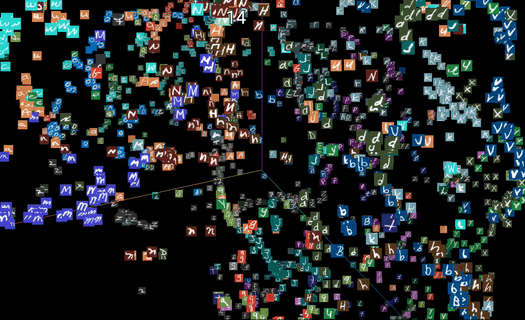Optimal Transport Applications
Study Group on Optimal Transport
Daniel Yukimura


Classic problems:
Monge's problem (1781):
Classic problems:
Logistics and economics:
- Tolstoi (1920)
- Hitchcock, Kantorovich, and Koopmans (1940s)


Classic problems:

Classic problems:

Classic problems:

Classic problems:
Kantorovich problem:
Dual problem:
Classic problems:
- Assignment and Routing problems
- Operations Research
- Economics
- Labor market
- Incomplete Econometrics
- Quantile methods
- Contract theory
- etc...
- Robust Optimization
OT in Nature:
Biology:

- Liquid transport in plants.
- Single cell gene expression

OT in Nature:
Physical systems:


- Metereology:
- Semigeostrophic equation
- Crystals
- Isoperimetric problem
Alessio Figalli
OT in Nature:
and more:
- Astrophysics
- Geology




OT for Machine Learning
Learning prob. distributions:





OT for Machine Learning
Generative Modeling:




OT for Machine Learning
Generative modeling:
OT for Machine Learning
Generative Adversarial Networks

OT for Machine Learning
Generative Adversarial Networks





OT for Machine Learning
Wasserstein GANs:
Kantorovich-Rubinstein duality
OT for Machine Learning
Wasserstein GANs:

OT for Machine Learning

Generative Adversarial Networks


Progressive growing GANs, 2017
StyleGAN2, 2018

StyleGAN3, 2021
Applications of GANs:
Natural Language Processing - GPT-3, 2020
- 175 billion parameters

Applications of GM:
AlphaFold - Protein folding, 2021

More applications of OT in ML


More applications of OT in ML



More applications of OT in ML
- Reinforcement Learning
- Imitation Learning
- Multi-agent policy transfer
- Style Transfer
- Normalizing Flows
- Mean field simulations
- Motion correction
- Theoretical Deep Learning
- ...
Context:
Wasserstein distance
Plug-in estimator
- linear programming
Context:
- [Sommerfield and Munk, 2017]:
only for finite support !
- [Dobrić and Yukich, 1995]:
Transport rank (TR):
factored coupling
Regularization via Factored Couplings:
Idea: Opt. couplings in practice can be well approx. by assuming the distributions have a small number of pieces moving nearly independently.
Regularized optimal coupling:
Questions:
- How to solve the above problem efficiently ?
- Is the solution robust ?
k-Wasserstein barycenters
prob. supported on k points
k-Wasserstein barycenter
induced factored coupling:
- Estimator for the squared Wasserstein distance:
- Estimated transport map:
Experiments:
Fragmented hypercube (synthetic):



OT
H
FOT
Experiments:
Fragmented hypercube (synthetic):

Experiments:
Batch correction for single cell RNA data:
- Each coordinate represents the expression-level of the corresponding gene.
- haematopoetic (blood) datasets from different sources.
Experiments:
Batch correction for single cell RNA data:

